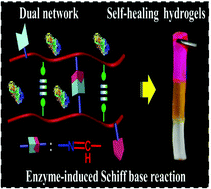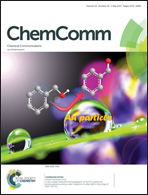Enzyme-induced dual-network ε-poly-l-lysine-based hydrogels with robust self-healing and antibacterial performance†
Abstract
An enzyme-induced strategy is reported to construct novel self-mending hydrogels based on ε-poly-L-lysine with both excellent self-healing properties (95%) and antibacterial capacity. Most importantly, the hydrogels are able to accelerate wound healing efficiently, which shows great potential in myriad biomedical fields, such as wound repair, artificial skin, and tissue engineering.



 Please wait while we load your content...
Please wait while we load your content...